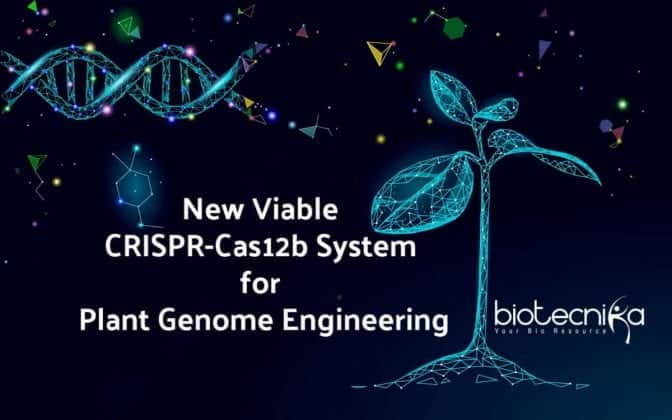CRISPR-Cas12b for Plant Genome Engineering
For the first time, a new CRISPR genome engineering system viable in plants: CRISPR-Cas12b was established at the University of Maryland by an assistant professor of Plant Science, Yiping Qi. When it comes to CRISPR technology, many are using the CRISPR-Cas9 system. But Qi and his lab are constantly exploring more sophisticated, efficient, and effective new CRISPR tools for a number of applications in crops that can aid in curbing the effects of climate change, pests, diseases and more. A versatile, customizable system in plants that provides effective gene editing, activation and repression all in one system is presented by the CRISPR-Cas12b system.
Qi said, “We are excited to be capable of filling in gaps and improving systems as the new CRISPR-Cas12b system for plant genome engineering is the first of its kind. We are not just focused on editing, we are also looking into developing gene repression and activation methods as we want to develop a full package of tools for this system, to show how useful it can be.”
In other CRISPR systems in plants, this complete suite of methods is the ones that have ultimately been missing. Before this paper, CRISPR-Cas12a and CRISPR-Cas9 were the two major systems available in plants. CRISPR-Cas9 is known for recognizing very short DNA sequences to make its cuts in the genome and its simplicity. CRISPR-Cas12a allows for larger staggered cuts in the DNA with additional complexity to customize the system and recognizes a different DNA targeting sequence. As the name suggests, CRISPR-Cas12b is more similar to CRISPR-Cas12a, but to provide gene activation in plants with this system, it did not have the ability. CRISPR-Cas12b is useful in cases where genetic expression of a trait needs to be turned on/up (activation) or off/down (repression) as the potential for broader targeting sites for gene repression and greater efficiency for gene activation is provided by CRISPR-Cas12b.
Qi says, “Generally people think of genome editing when they think of CRISPR, but in fact, CRISPR is a complex system that allows promoting, recruiting or targetting certain aspects already in the DNA. CRISPR can be used as a binding tool to attract activators or repressors to induce or suppress traits and the activation or repression of certain genes can be regulated using CRISPR.” When gene activation is the goal, CRISPR-Cas12b has an edge over CRISPR-Cas12a. Moreover, all the positives that were inherent in the CRISPR-Cas12a system for plants are retained in this new system.
Qi says, “CRISPR-Cas12b system is a more versatile system because we can play with more domains, more modifications, and thus there are more opportunities to engineer the whole system. We can get the most robust gene activation and editing capabilities only when we have this kind of hybrid system with more complexity.
Rice, which is already a major global crop was used for the initial work for CRISPR-Cas12b. To further enhance and improve plant genome engineering, Qi and his lab hope to explore more systems.
Qi mentioned that “The crop yield and feeding a growing population in a changing world can be increased with the help of this type of technology. We need to bridge the gap between what researchers are doing and how those impacts affect the world because, in the end, we are talking about broad impact and public outreach.”

